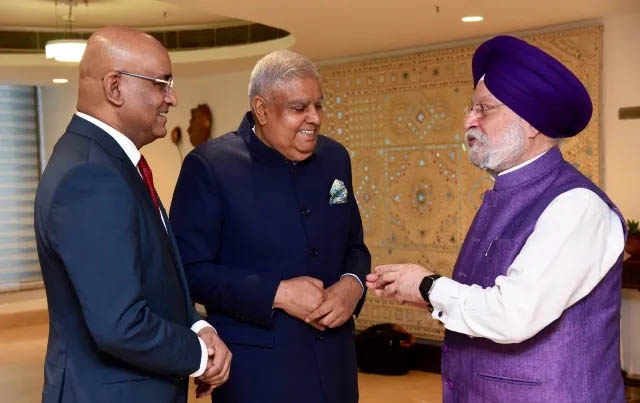As suggested in the Friday March 3 issue of the Stabroek Business, the Governments of Guyana and India would appear to be on the verge of ‘sealing a deal’ that would effectively play a role in calming nerves in the Indian capital, Delhi, over access to oil supplies sufficient to meet the needs of the world’s third largest consumer of oil. The ensuing Russian military hostilities in Ukraine and the use of the country’s vast oil resources as leverage in a conflict in which it has few backers in the international community has meant that India has been casting around in order to ensure its petro security. While recent reports have been suggesting that the Gulf States will remain oil suppliers to India for a long time, Delhi has moved to capitalize on the vast resources of new-kid-on-the-block Guyana, with which country it has had close bilateral ties for more than half a century.
Late last week, it was announced in Georgetown that Guyana and India had moved closer to the signing of a Memorandum of Understanding on the energy sector which, in effect, means that a major oil supply deal with Delhi is around the proverbial corner. What will be, when concluded, by far the biggest bilateral oil deal signed by Guyana since oil recovery first commenced in 2015 is likely to be reflected in an MOU which, up to last weekend was reportedly “being reviewed by India’s Cabinet”. The MOU, unsurprisingly, emerged shortly after a visit to Delhi by Vice President Bharrat Jagdeo and is expected to enable India’s purchase of Stabroek Block crude. Delhi, it seems, has been able to secure a much bigger role in the development of Guyana’s oil and gas sector; a Reuters report alluding to additional roles in “capacity development in the Natural Resources Ministry, consultation on natural gas, and government-to-government participation in oil blocks exploration.”
Once Vice President Jagdeo had returned from Delhi, the Government of Guyana immediately summoned a high-profile press conference at which he reportedly outlined some of the more important tenets of the MOU which is expected to shape Guyana/India petro relations, going forward. Significantly, it appears that the terms of what, unquestionably the most significant bilateral petro understanding reached by Guyana, were left to the Vice President to solidify during his recent six-day visit to India. Jagdeo reportedly outlined that the wide-ranging agreement “will allow for India to purchase Guyana’s sweet light crude” on the understanding that “the conditions are competitive and follow market conditions,” the Reuters report says. Jagdeo, who is referred to as Guyana’s “chief policy maker in the oil sector”, said that as things stand, that there is no agreement, in any shape or form, on the table at this time for India to purchase crude from Guyana, a pronouncement that is presumably designed to send a message that any agreement will only emerge from hard bargaining that will very much take account of Guyana’s interests.
Contextually, Mr. Jagdeo is reportedly to have made clear to his Indian hosts Guyana’s keenness to embrace some of the best practices employed by India in its oil industry, which it believes is worthy of emulation. It is against this backdrop, he reportedly said, that part of the envisaged wide-ranging deal with India includes an agreement under which India is expected to “upskill” the Ministry of Natural Resources. The Reuters report also alludes to provisions under the still-to-be-signed MOU under which “Indian consultants” will “… help Guyanese authorities refine their Natural Gas Strategy (NGS).”…………”the overarching framework or roadmap for Guyana’s gas resources that lay outside of the Liza field that will feed the coveted Gas-to-Energy project.”







